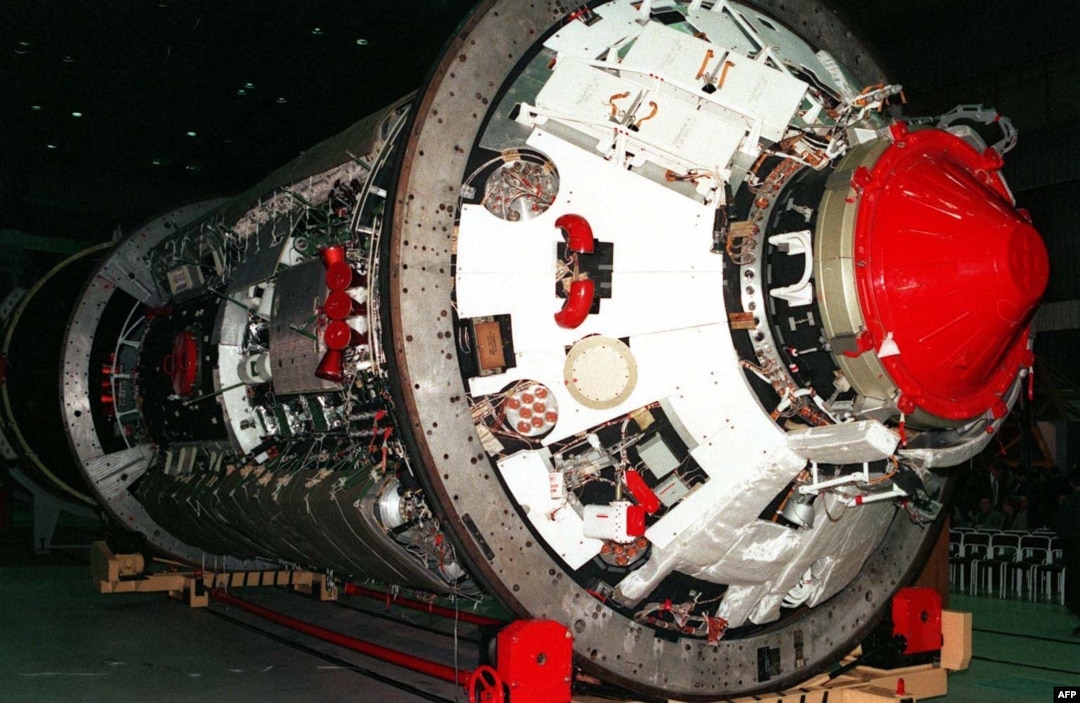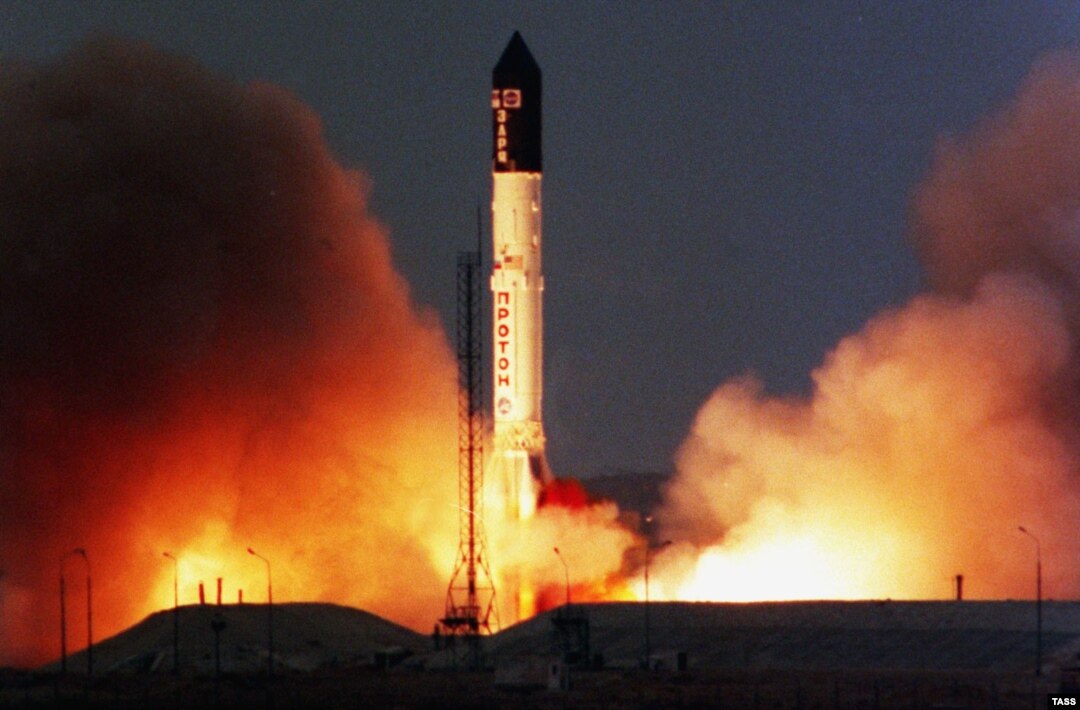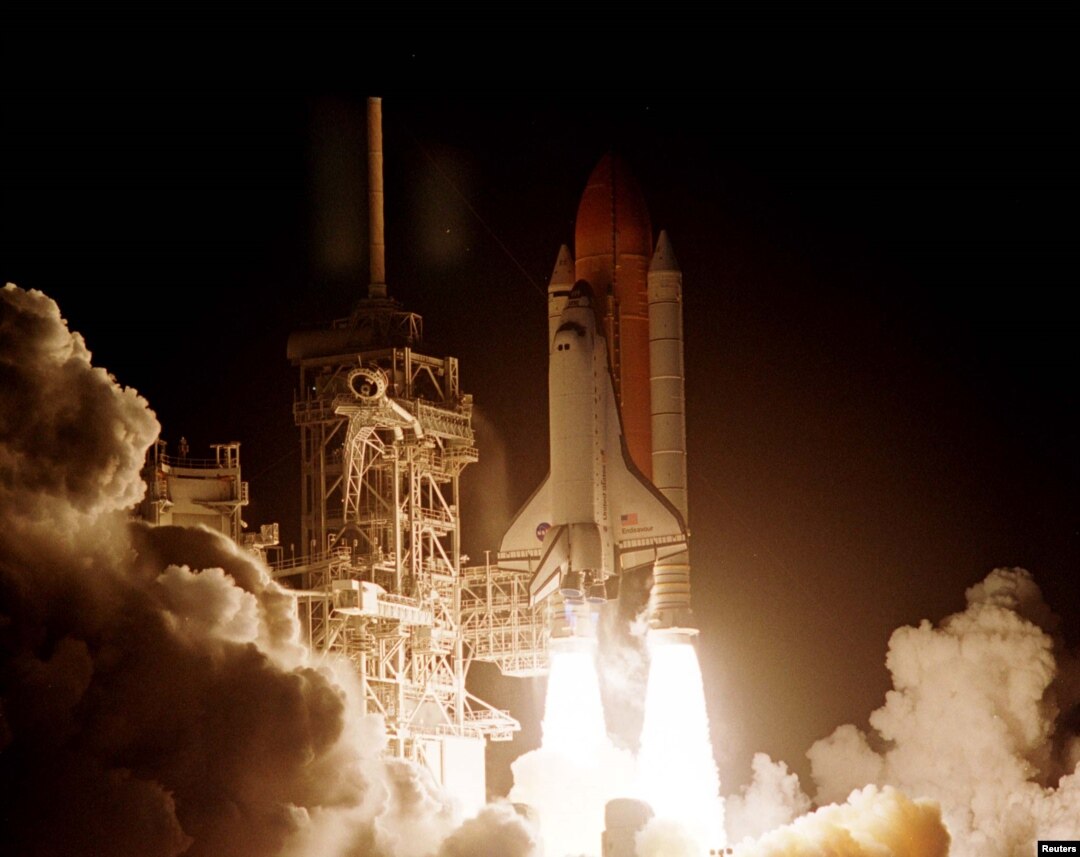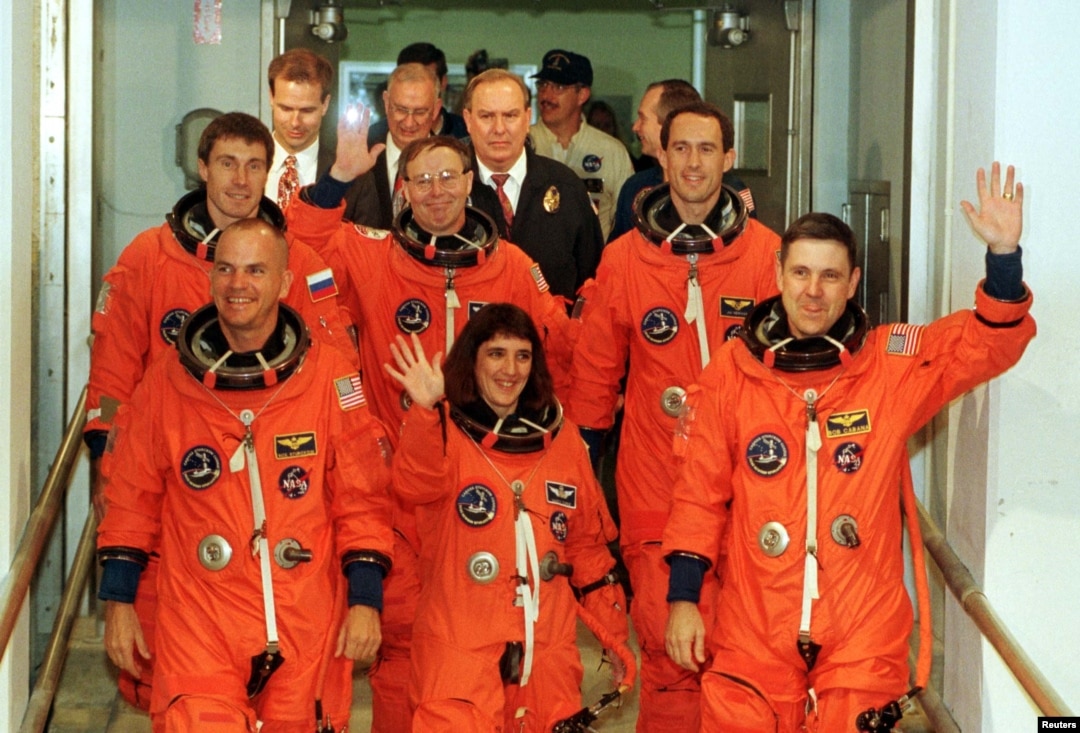The International Space Station At 15

This January 1998 photo shows the very first element of what would later become the International Space Station -- the "Zarya" cargo module -- as the module is prepared for shipment from its Moscow factory to the launch site in Kazakhstan.

A Russian Proton booster rocket takes off from the Baikonur rocket base in Kazakhstan carrying the "Zarya" cargo module. The launch came off without a hitch, giving the International Space Station (ISS) a perfect start. Parties to the ISS project include Russia, the United States, Canada, Japan, and the European Space Agency.

The space shuttle "Endeavour" lifts off from the Kennedy Space Center early in the morning of December 4, 1998. The crew was successful in their second attempt to begin Mission STS-88, the first U.S. flight for assembly of the International Space Station carrying the "Unity" module. That module would later pair up with the "Zarya" to form the first functional segment of the ISS.

The crew of the space shuttle "Endeavour" departs from their crew quarters for launch pad 39A at the Kennedy Space Center in Florida, early on the morning of December 3, 1998.
A view from the cargo bay of the U.S. space shuttle "Endeavour" showing the Russian "Zarya" module (top) and the U.S. "Unity" connecting module (bottom) along with the robot arm (left). This photo shows the early stages of work building the ISS.
U.S. space shuttle "Endeavour" crew member Jim Newman (left) works at freeing a sticking antenna on the "Zarya" module of the International Space Station as crew member Jerry Ross (center) looks on. This was one of the ISS's first early hiccups, but was resolved successfully.
Blanketing clouds form the backdrop for this scene of the connected "Zarya" and "Unity" modules after having been released from the cargo bay of the space shuttle "Endeavour" a bit earlier.
This artist's rendering shows the deployment of the "Unity" module, the connecting segment for the International Space Station (left) and the space shuttle "Endeavour," as astronauts prepare to join it with the Russian-built "Zarya" (above).
With Earth in the background, the International Space Station is seen in this image photographed by a crewmember on board the space shuttle Endeavour after the station and shuttle began their separation, in this undated NASA handout.
Over the intervening years, the International Space Station has hosted crew members from around the world. Here, a "Soyuz" TMA-10M spacecraft carrying the International Space Station crew of U.S. astronaut Michael Hopkins and Russian cosmonauts Oleg Kotov and Sergey Ryazanskiy blasts off from the launch pad at the Baikonur cosmodrome in Kazakhstan in September 2013.
An H-2B rocket carrying cargo for the International Space Station blasts off from the launch pad at the Tanegashima Space Center on the Japanese island of Tanegashima, about 1,000 km southwest of Tokyo, in August 2013. The rocket, also known as "Kounotori," which means stork, carried a small robot to help Japanese astronaut Koichi Wakata conduct experiments in space.
Russian nesting dolls -- called Matryoshka dolls -- depict the ISS crew members (left to right) Italian astronaut Luca Parmitano, Russian cosmonaut Fyodor Yurchikhin, and U.S. astronaut Karen Nyberg, on November 11, 2013.
NASA astronaut Karen Nyberg, Russian cosmonaut and mission commander Fyodor Yurchikhin (right), and European Space Agency astronaut Luca Parmitano pose for a photo in the Kibo laboratory of the International Space Station.
A "Soyuz" TMA-09M capsule carrying the ISS crew of Karen Nyberg, Fyodor Yurchikhin, and Luca Parmitano lands in a remote area near the town of Zhezkazgan, Kazakhstan, in November 2013. The three returned to Earth with an Olympic torch that was displayed in open space as part of Russia's preparations for the Sochi 2014 Winter Games.
This photo from Kazakhstan shows (left to right) Soyuz Flight Engineer Koichi Wakata from Japan, Commander Mikhail Tyurin from Russia, and Flight Engineer Rick Mastracchio (from the U.S.) holding the Olympic torch prior to boarding the Soyuz TMA-11M rocket on November 7, 2013.

